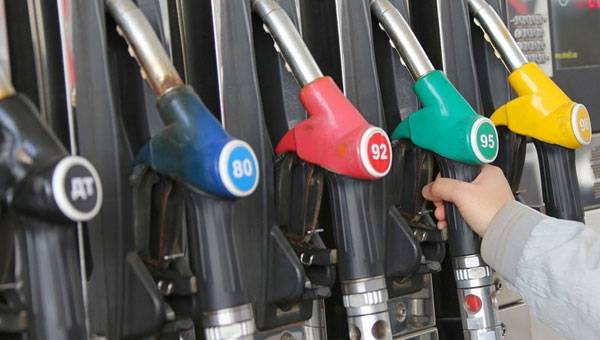
Photo: http://m24.ru
Retail fuel prices in Russia had fell after wholesale prices decreased, said Head of the Federal Antimonopoly Service (FAS) Maksim Shaskolsky. “Wholesale fuel prices are going down now, the logistics have not changed, and the volumes are sufficient. There are prerequisites for the reduction of retail prices as well,” he said.
The price of motor fuel was affected by sanctions, which reduced exports from Belarusian refineries. As a result, they redirected its goods to the Russian market. The decrease in fuel prices at the St. Petersburg International Mercantile Exchange started during the first week of March. Thus, from February 28 to March 5, the Ai-92 gasoline fell by 11.6% and Ai-95 by 9.6%. The cost of diesel fuel decreased by about 12%.
The decline in wholesale prices continued this week as well. On March 10, Ai-92 went down in price by 6.4% to 36,880 rubles ($354.36) per ton, reaching its lowest level since April 2020. In fact, the decrease in price since late February amounted to 24.5%. Ai-95 has lost about 2% of cost on Thursday and dropped to 40,180 ($386.07) rubles.
Petrol prices went down in Syktyvkar, Salekhard, Irkutsk and Nizhny Novgorod regions, as well as in the Primorsky territory. In the Far East, the prices change, among other things, due to the subsidization of the railroad tariff for fuel transportation.
After the introduction of another package of tough anti-Russian sanctions, exchange prices for Russian fuel brands began to decline again. On the previous day, the cost of gasoline Ai-92 and Ai-95 fell by more than 4% after a decrease of about 6% the day before.
Inter-season diesel fuel noticeably fell in price, down to 53,600 ($515.02) per ton (down by 2.35%), while winter diesel fuel price plummeted to 52,500 rubles ($504.45), down by 3.67%. The cost of summer fuel remained unchanged on Wednesday.
Changes in the cost of gasoline were noted in some Russian regions. For example, the price of fuel at Rosneft gas stations in Salekhard decreased by 1.5 rubles ($0.01.) In Vladivostok, price fell from 60 kopecks ($0.006) to 4.5 rubles ($0.43), depending on a gas station.
However, it is not oil prices that have become skyrocketing due to the overall crisis that have real impact on the Russian gasoline and diesel fuel market, but rather motor fuel quotations observed on Western platforms.
Over the past three years, motor fuel prices in Russia were highly dependent on external quotations. That is, how much gasoline costs in rubles on external exchange platforms. However, due to the automatic cut-off of the Russian oil companies from Western exchanges because of the sactions, petroleum products began to focus on domestic indicators. At the same time, when stock exchange quotations fall, wholesale prices drop, and this leads to a decrease in retail prices.
In addition, the fall in the cost of gasoline is associated with a logical decrease in seasonal demand in Russia. For example, the price of winter diesel fuel rose from late November 2021 to mid-January this year. Now, with the early arrival of warm weather in some regions of Russia, the demand for winter diesel has decreased. The extremely high price hike was also caused by non-optimized tax regimes.
